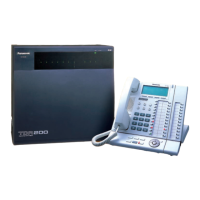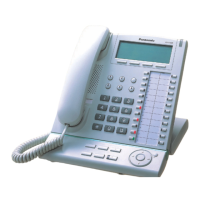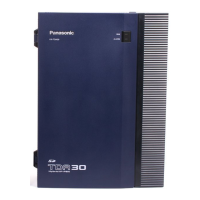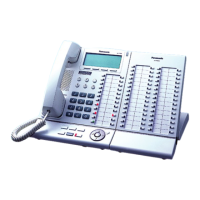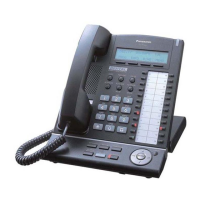1.27 Networking Features
Feature Guide 191
1.27 Networking Features
1.27.1 TIE Line Service
1.27.1.1 TIE Line Service—OVERVIEW
Description
Two PBXs can be connected by a privately leased telephone line, and calls can be made between PBXs
using this "TIE line". TIE lines provide a cost-effective way to route calls and communications, and are often
used to connect corporate offices located in different cities.
When two or more PBXs are connected by TIE lines, they can create a "private network" which is
independent of the public network (i.e., the telephone company and its lines). Calls can be handled between
extensions of the PBXs without using the services of a telephone company, even though the PBXs may be
installed in different locations.
TIE lines can also be used in conjunction with CO lines. This allows an outside caller to call one PBX and
be connected to an extension in a different PBX, or allows an extension user to make a call to an outside
party which is routed first through another PBX in the private network. Routing calls this way can be very
cost-effective. For example, an employee in Los Angeles can make a call to a customer in New York by
routing the call through the PBX in the company's New York office. In such a case the call will be billed to
the New York office as a local call.
In order to make and receive calls using TIE lines, various tables must be programmed to instruct each PBX
on how to direct and receive calls that are made using TIE line service.
1. Interface
A private network can be established using the following methods.
2. Types of Calls That Can be Made Using TIE Lines
TIE Line Calls
Calls can be made between extensions of different PBXs connected by a TIE line. These PBXs may
be connected to each other directly, or through another PBX. To make a TIE line call, an extension user
Method
Port (Channel)
Type*
Available Services Network Specification Details In
T1 Line TIE (E&M) • TIE Line Service Digital (64 kbps × 24
channels)
—
PRI Line QSIG
(Master or Slave)
• TIE Line Service
• QSIG Services
Digital (ISDN 23B+D) • 1.27.2 QSIG
Network
VoIP Not assignable • TIE Line Service
• QSIG Services
• IP data send/
receive
Internet Protocol (IP) • 1.27.3 Voice
over Internet
Protocol (VoIP)
Network
* In order to establish a private network, port (channel) type must be assigned through system
programming as shown.
The interfaces that can be used depend on the cards installed in the PBX.
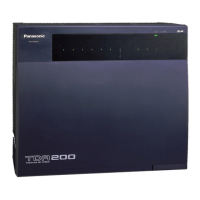
